Complete Solutions to TEXTUAL EXAMPLES of chapter ELECTRIC CHARGES AND FIELDS of Class 12 book with complete answers and questions
| Class 12 | PHYSICS |
| Chapter | ELECTRIC CHARGES AND FIELDS |
| VIKRAM | TEXTUAL EXAMPLES |
| Number Of Questions | 19 |
| Academic Year | 2023-24 |
How can you charge a metal sphere positively without touching it?
View SolutionIf `10^(9)` electrons move out of a body to another body evergy second, how much time is required to get a total charge of 1 C on the other body?
View SolutionHow much positive and negative charge is there in a cup of water?
View SolutionCoulomb's law for electrostatic force between two point charges and Newton's law for gravitational force between two stationary point masses, both have inverse-square dependence on the distance between the charges/masses. Compare the strength of these forces by determining the ratio of their magnitudes (i) for an electron and a proton and (ii) for two protons
View SolutionCoulomb's law for electrostatic force between two point charges and Newton's law for gravitational force between two stationary point masses, both have inverse-square dependence on the distance between the charges/masses. Estimate the accelerations of electron and proton due to the electrical force of their mutual attraction when they are `1 Å(=10^(-10) m)` apart?
`(m_(p)=1.67xx10^(-27) kg, m^(3)=9.11xx10^(-31) kg)`.
View SolutionA charged metalic sphere A is suspended by a nylon thread. Another charged metallic sphere B held by an insulating handle is brought close to A such that the distance between their centres is 10 cm, as shown in Fig. (a). The resulting repulsion of A is noted (for example, by shining a beam of light and measuring the deflection of its shadow on a screen). Spheres A and B are touched by uncharged spheres C and D respectively, as shown in Fig. (b). C and D are then removed and B is brought closer to A to distance of 5.0 cm between their centres, as shown in Fig. (c). what is the expected repulsion of A on the basis of Coulomb's law? Spheres A and C and spheres B and D have identical sizes. Ignore the size of A and B in comparison to the separation between their centres.
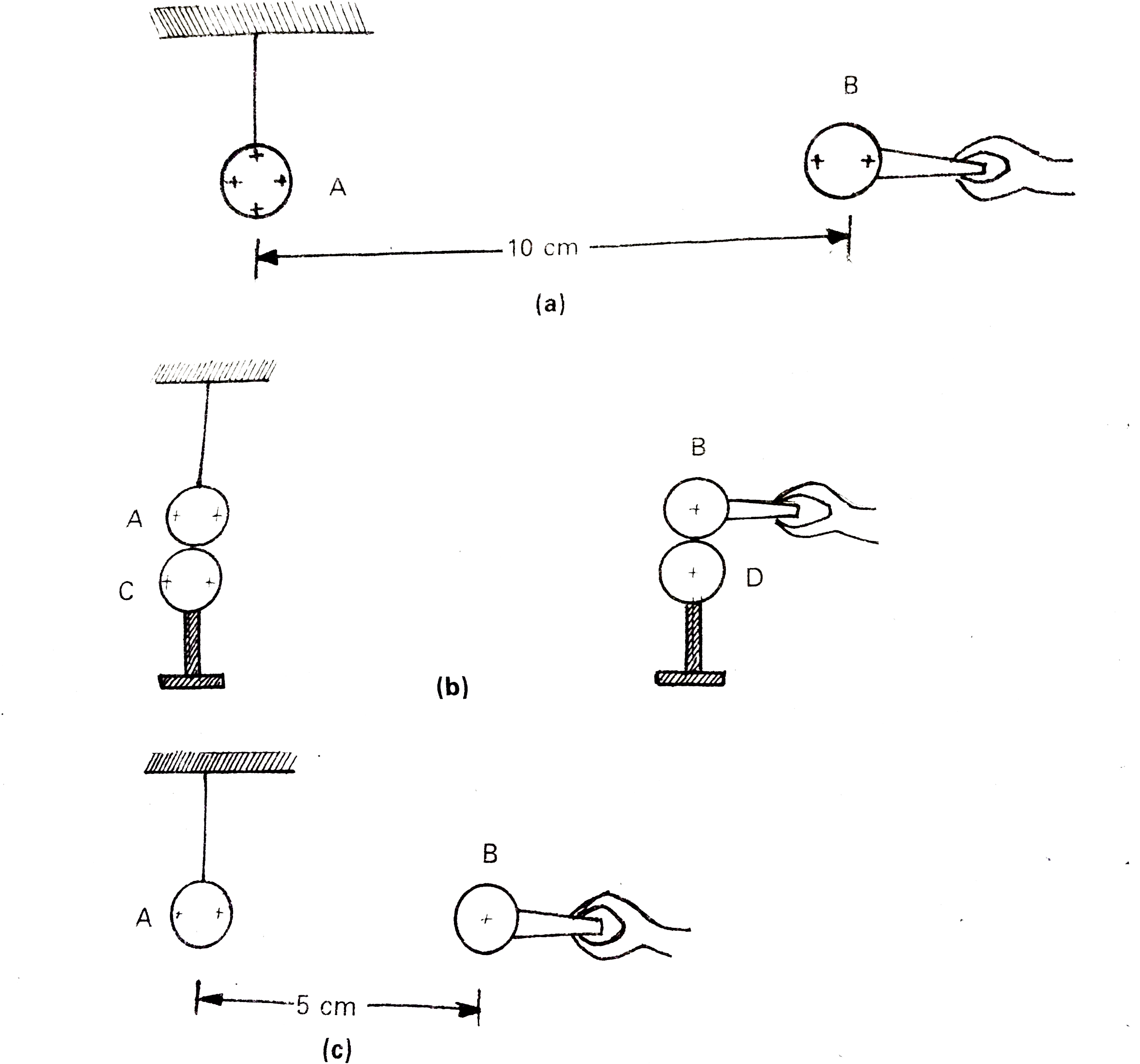
View SolutionConsider three charges `q_(1), q_(2), q_(3)` each equal to q at the vertices of an equilateral triangle of side l. What is the force on a charge Q (with the same sign as q) placed at the centroid of the triangle, as shown in Fig. ?
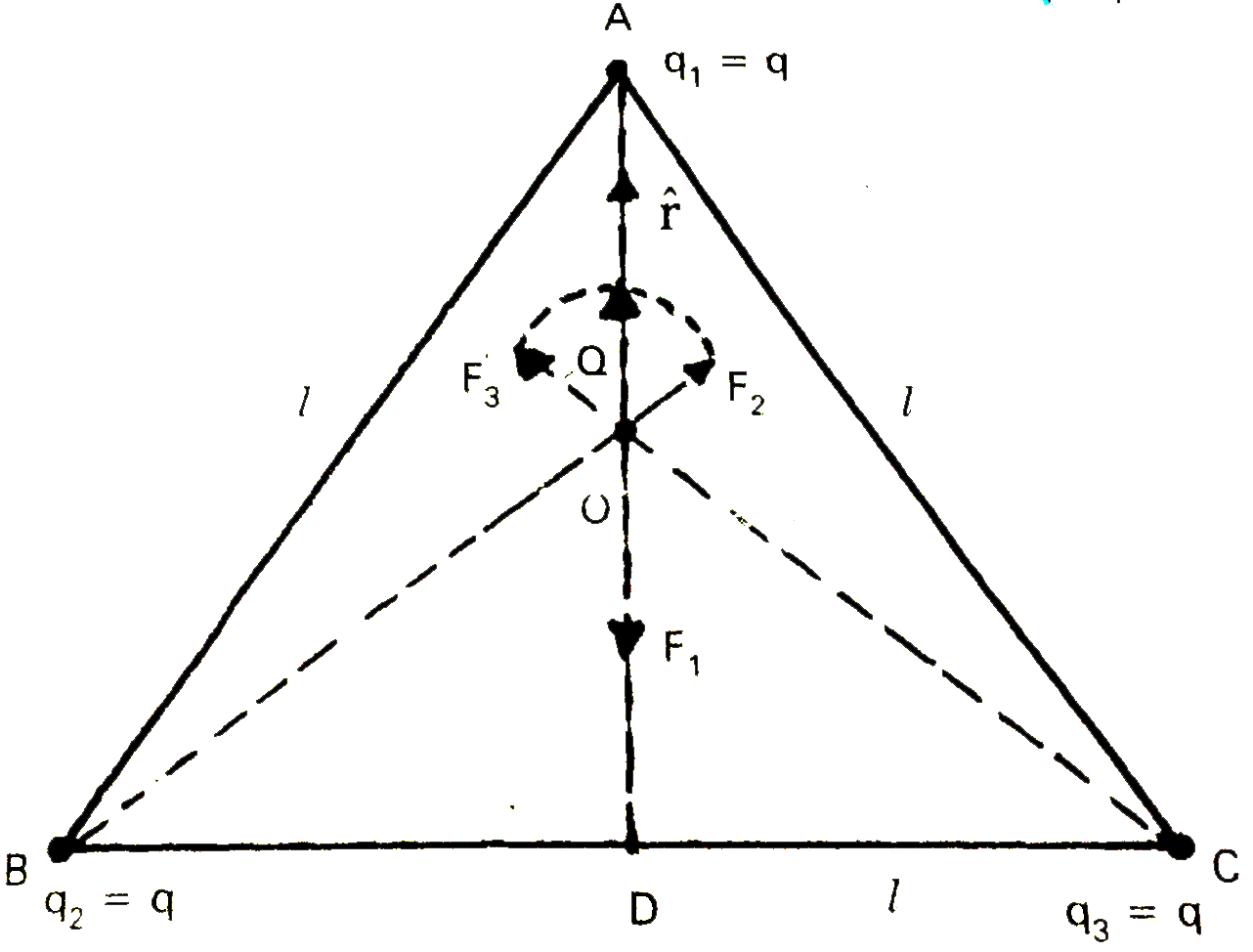
View SolutionConsider the charge q, q and -q placed at the vertices of an equilateral triangle, as shown in fig. What is the force on each charge?
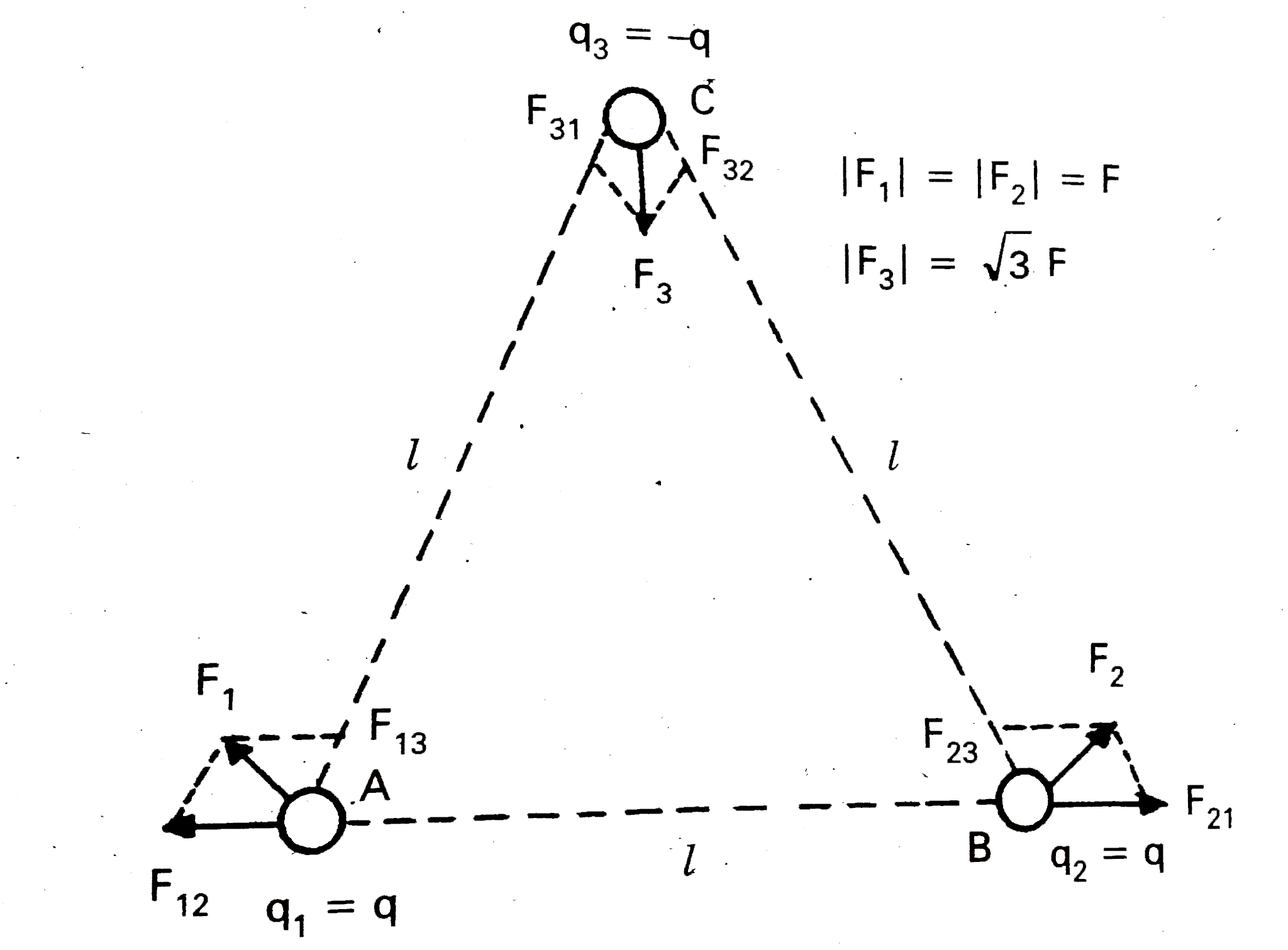
View SolutionAn electron falls through a distance of 1.5 cm in a uniform electric field of magnitude `2.0xx10^(4) N C^(-1)`. The direction of the field is reversed keeping its magnitude unchanged and a proton falls through the same distance. Compute the time of fall in each case. Contrast the situation with that of 'free fall under gravity'.

View SolutionTwo point charges `q_(1)` and `q_(2)`, of magnitude `+10^(-8) C` and `-10^(-8) C`, respectively, are placed 0.1 m apart. Calculate the electric fields at points A, B and C shown in Fig.
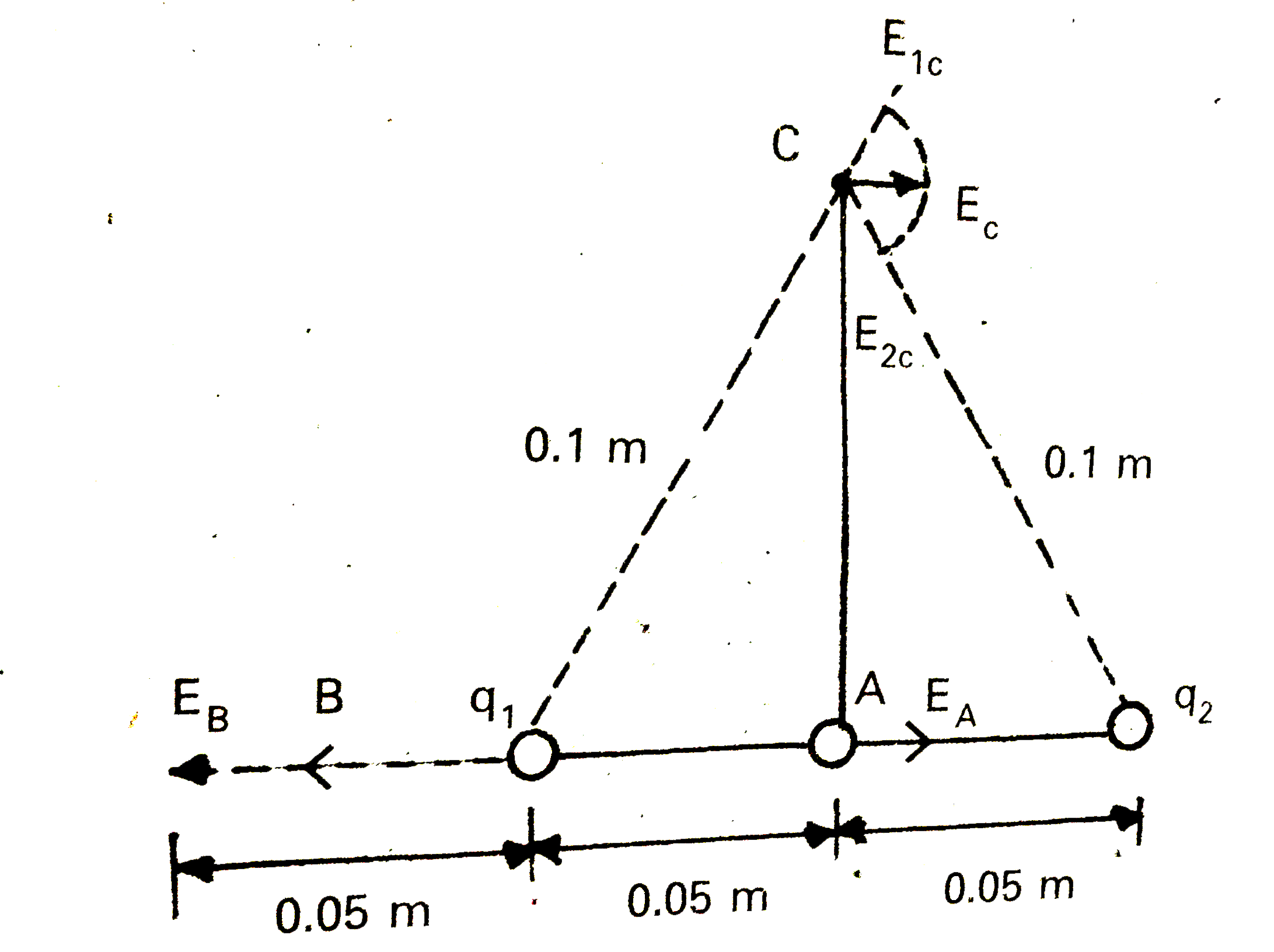
View SolutionTwo charges `10 muC` are placed 5.0 mm apart. Determine the electric field at a point P on the axis of the dipole 15 cm away from its centre O on the side of the positive charge, as shown in Fig.
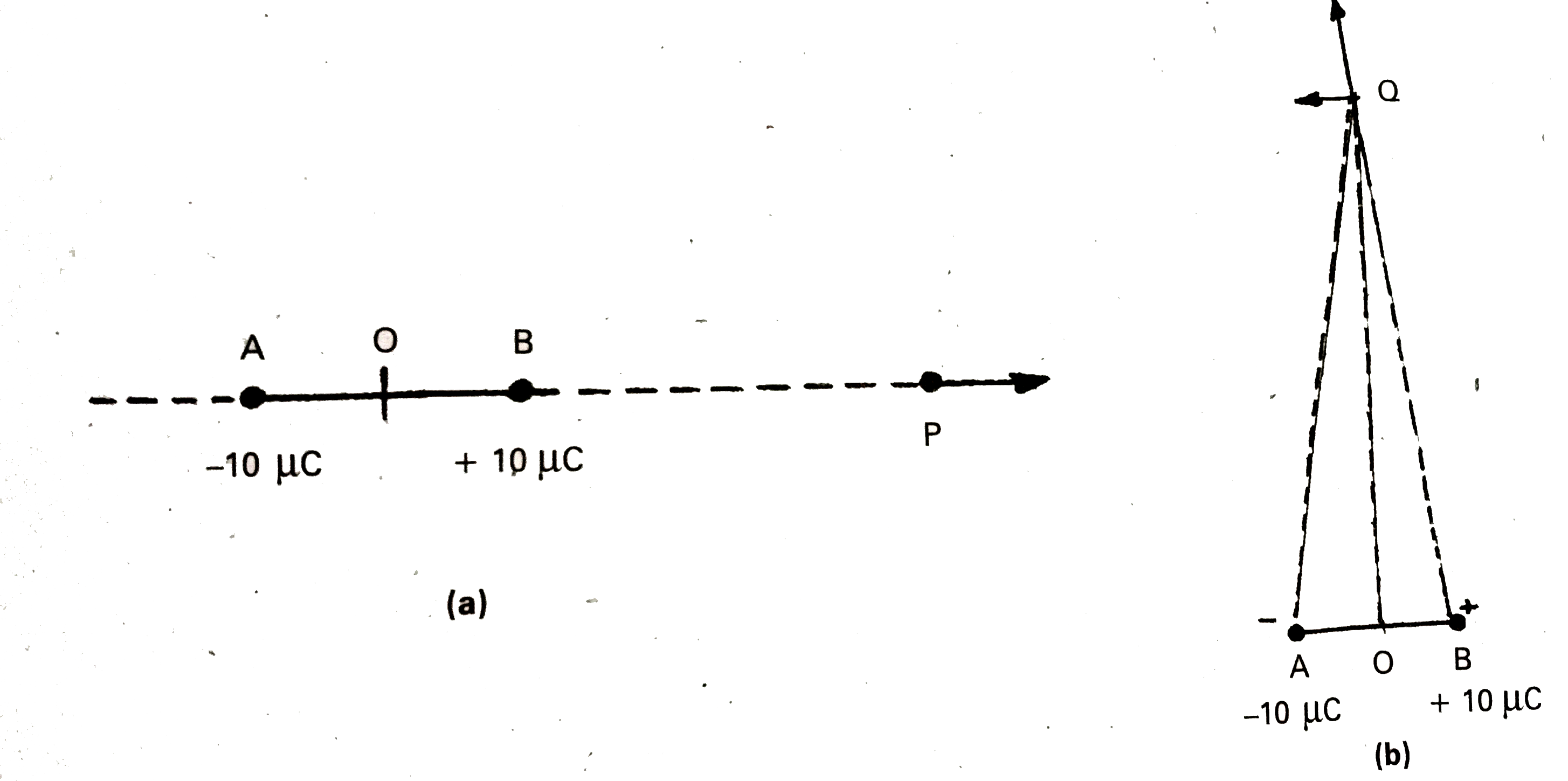
View SolutionTwo charges `10 muC` are placed 5.0 mm apart. Determine the electric field at a point Q, 15 cm away from O on a line passing through O and normal to the axis of the dipole, as shown in Fig.
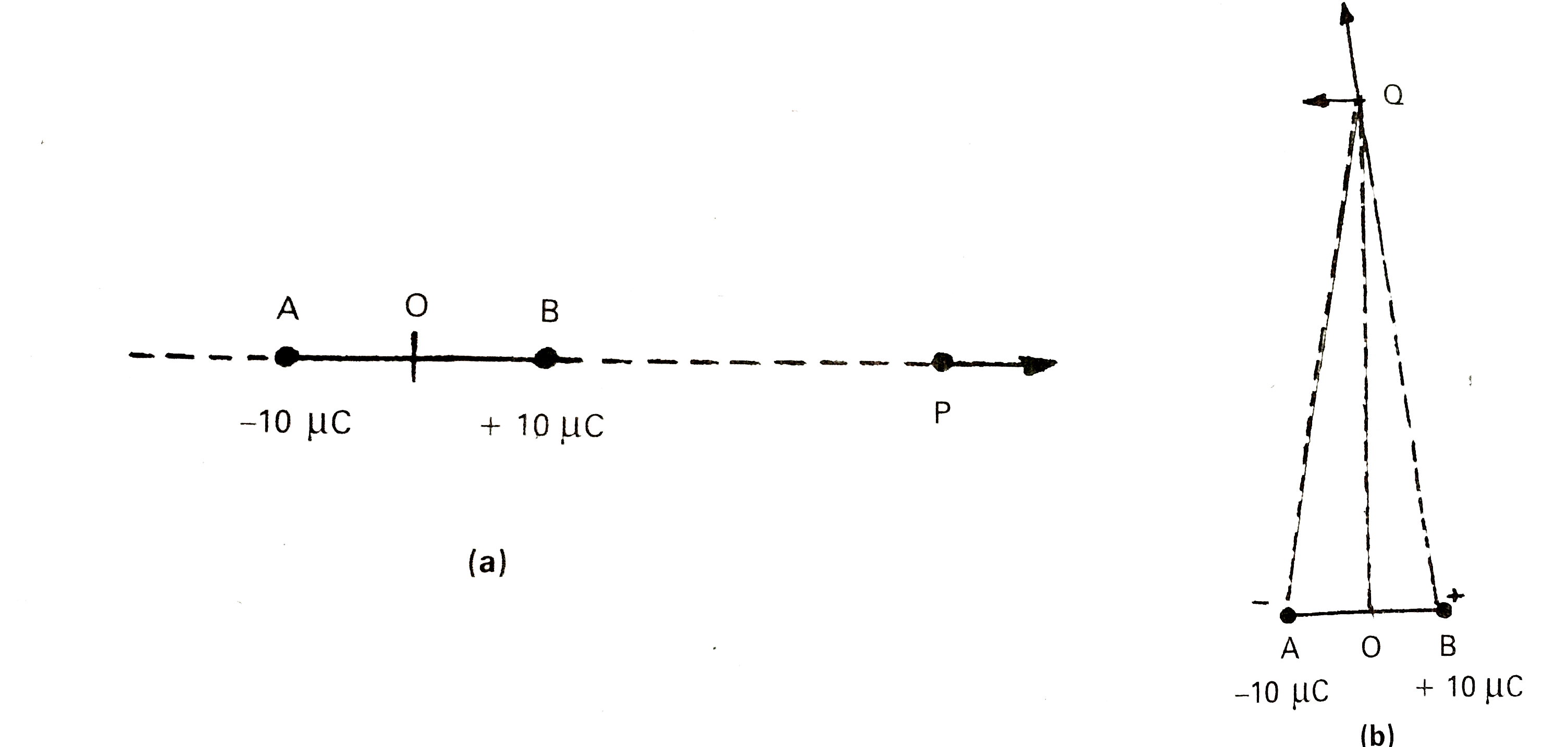
View SolutionThe electric field components in Fig. are `E_(x)=ax^(1//2), E_(y)=E_(z)=0`, in which `alpha=800N//C m^(1//2)`. Calculate the flux through the cube
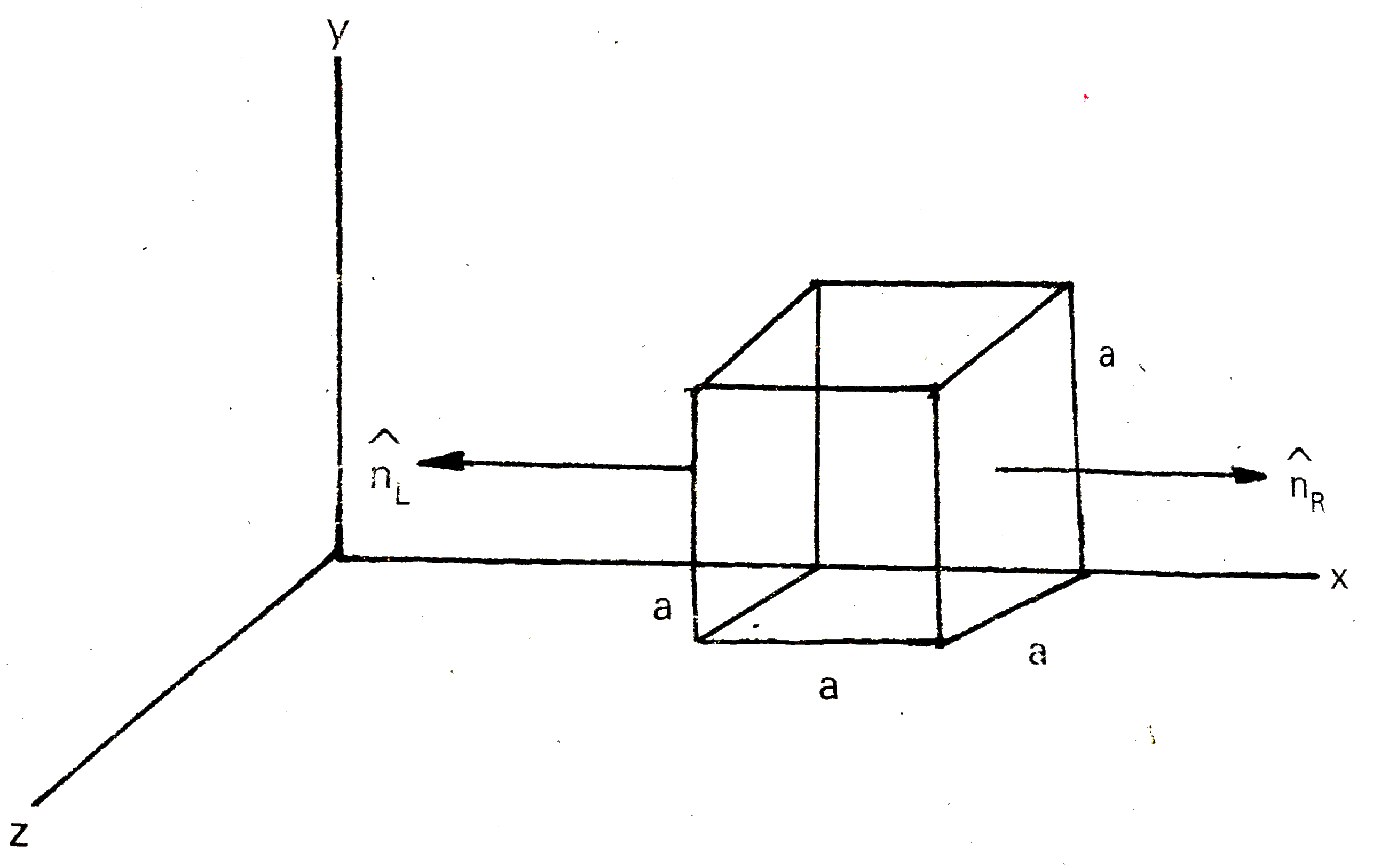
View SolutionThe electric field components in Fig. are `E_(x)=ax^(1//2), E_(y)=E_(z)=0`, in which `alpha=800N//C m^(1//2)`. Calculate the charge within the cube. Assume that `a=0.1 m`.
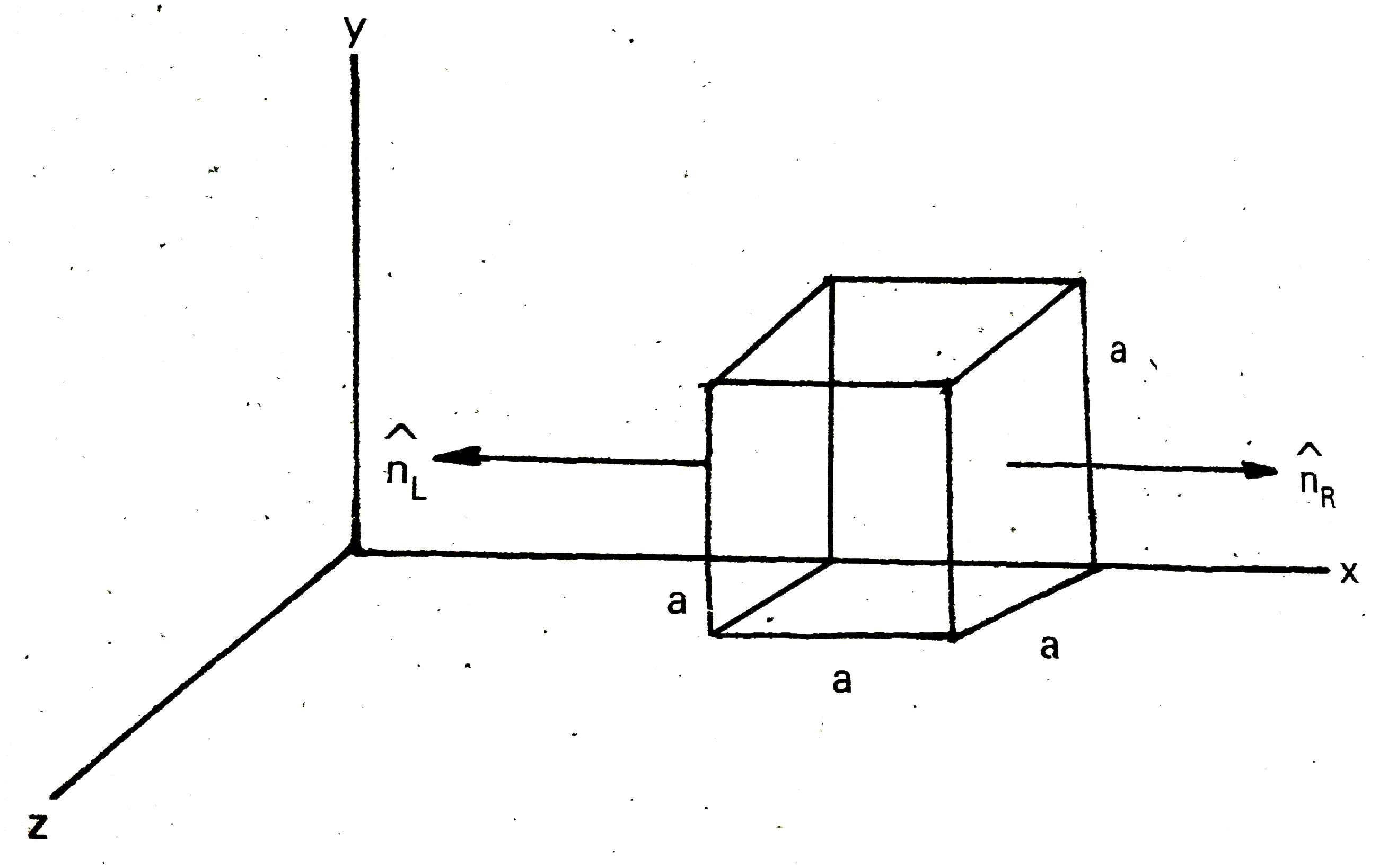
View SolutionAn electric field is uniform and in the positive x direction for positive x and uniform with the same magnitude but in the negative x direction for negative x. It is given that `E=200 hat(i) N//C` for `x gt 0` and `E=-200 hat(i) N//C` for `x lt 0`. A right circular cylinder of length 20 cm and radius 5 cm has its centre at the origin and its axis along the x-axis so that one face is at `x=+10` cm and the other is at `x=-10` cm
What is the net outward flux through each flat face?
View SolutionAn electric field is uniform and in the positive x direction for positive x and uniform with the same magnitude but in the negative x direction for negative x. It is given that `E=200 hat(i) N//C` for `x gt 0` and `E=-200 hat(i) N//C` for `x lt 0`. A right circular cylinder of length 20 cm and radius 5 cm has its centre at the origin and its axis along the x-axis so that one face is at `x=+10` cm and the other is at `x=-10` cm
What is the flux through the side of the cylinder?
View SolutionAn electric field is uniform and in the positive x direction for positive x and uniform with the same magnitude but in the negative x direction for negative x. It is given that `E=200 hat(i) N//C` for `x gt 0` and `E=-200 hat(i) N//C` for `x lt 0`. A right circular cylinder of length 20 cm and radius 5 cm has its centre at the origin and its axis along the x-axis so that one face is at `x=+10` cm and the other is at `x=-10` cm
What is the net outward flux through the xylinder?
View SolutionAn electric field is uniform and in the positive x direction for positive x and uniform with the same magnitude but in the negative x direction for negative x. It is given that `E=200 hat(i) N//C` for `x gt 0` and `E=-200 hat(i) N//C` for `x lt 0`. A right circular cylinder of length 20 cm and radius 5 cm has its centre at the origin and its axis along the x-axis so that one face is at `x=+10` cm and the other is at `x=-10` cm
What is the net charge inside the cylinder?
View SolutionAn early model for an atom considered it to have a positively charged point nucleaus of charged Ze, surrounded by a uniform density of negative charge up to a radius R. The atom as a whole is neutral. For this model, what is the electric field at a distance r from the nucleus?
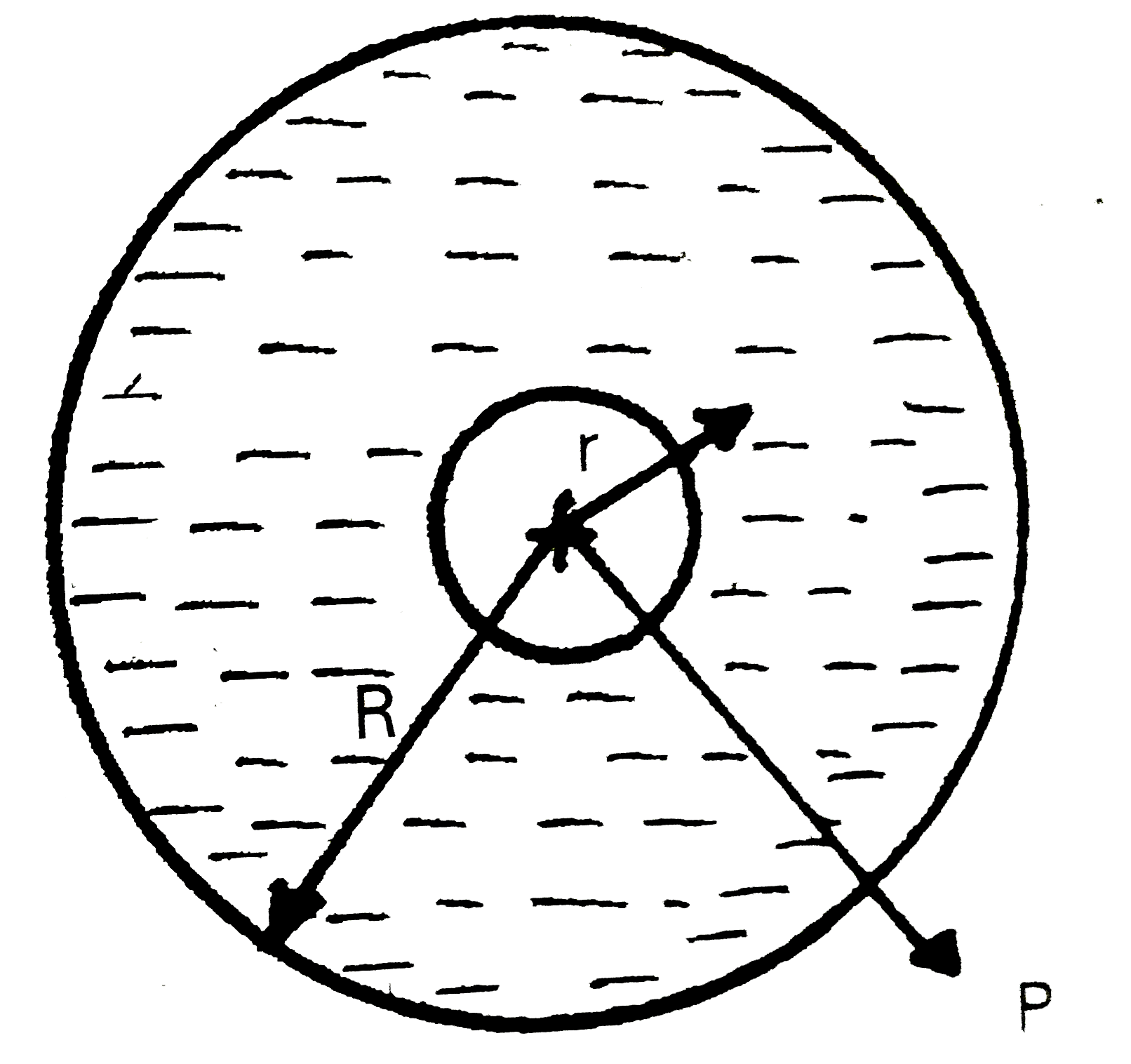
View Solution
TEXTUAL EXAMPLES questions and complete solutions for chapter ELECTRIC CHARGES AND FIELDS of VIKRAM PUBLICATION ( ANDHRA PUBLICATION) of Class 12